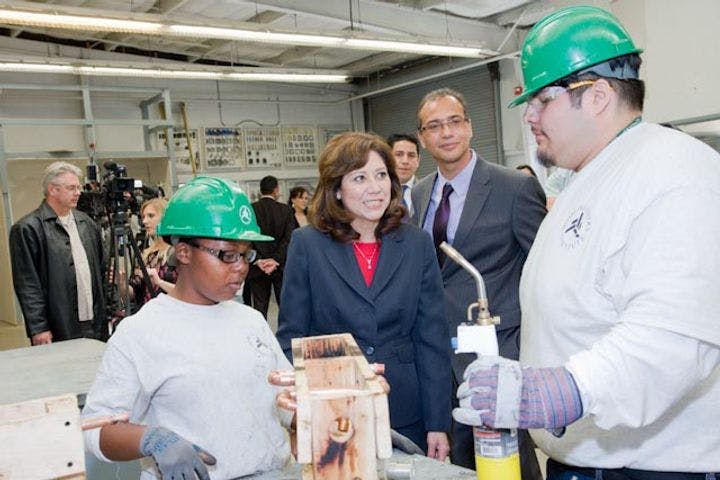Spring 2009
A Leg Up From the Job Corps
– The Wilson Quarterly
Assessing the Job Corps, a Great Society program that works.
The Job Corps, a legacy of the Great Society, has been under attack from one direction or another throughout most of its 45 years. But now the results are in: It’s effective. It gives low-income workers about a year of extra schooling, counseling, and vocational training in one of 75 different trades. Its participants are less commonly arrested and locked up in prison, and the great majority who haven’t graduated from high school are nearly twice as likely to earn an equivalency degree. They also earn more money than non-participants. Unfortunately, the effect on the incomes of younger Job Corps graduates is curiously short-lived.
The Job Corps is the only large-scale training program that has been shown to increase earnings for down-and-out youth, write Peter Z. Schochet, John Burghardt, and Sheena McConnell, researchers with Mathematica Policy Research in Princeton, New Jersey. Designed for young people ages 16 to 24 who receive welfare or food stamps or have very low incomes, and who live in an “environment characterized by a disruptive home life, high crime rates, or limited job opportunities,” the corps is the nation’s largest job-training program, with about 60,000 new participants every year. Nearly 90 percent of those enrolled live in residential Job Corps centers, so it’s also expensive, at $16,500 per trainee.
The authors’ intensive study of 15,400 young people eligible for the Job Corps, of whom 60 percent actually participated in the corps, found that those who enrolled earned about 12 percent more per week than those who didn’t in the fourth year after training began, and were more likely to receive job-linked fringe benefits. (Training varies in length from three months to more than a year.) Both groups were most likely to work in service and construction jobs.
But after four years, the earnings boost disappeared, except for the oldest group at the time of enrollment, those 20 to 24. Their wages continued to be higher than those of their peers who were eligible but had not enrolled in the corps. The program staff described them as more motivated and better behaved than the younger enrollees.
As the nation copes with millions of unemployed workers, the plight of Job Corps youths is easy to overlook. The bottom line of this survey, one of the largest social-science studies ever conducted: The corps helps its graduates. But cost-benefit analysis shows that the increased earnings and reduced crime and use of social services offset less than a quarter of the cost per enrollee after four years. The challenges for the corps are to improve its training for its younger participants and make the program cost-effective for the many youngsters who could use its help.
* * *
THE SOURCE: “Does Job Corps Work? Impact Findings From the National Job Corps Study” by Peter Z. Schochet, John Burghardt, and Sheena McConnell, in American Economic Review, Dec. 2008.
Photo courtsey of the United States Department of Labor
